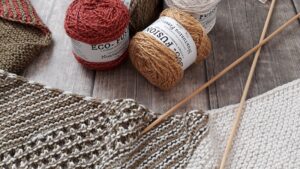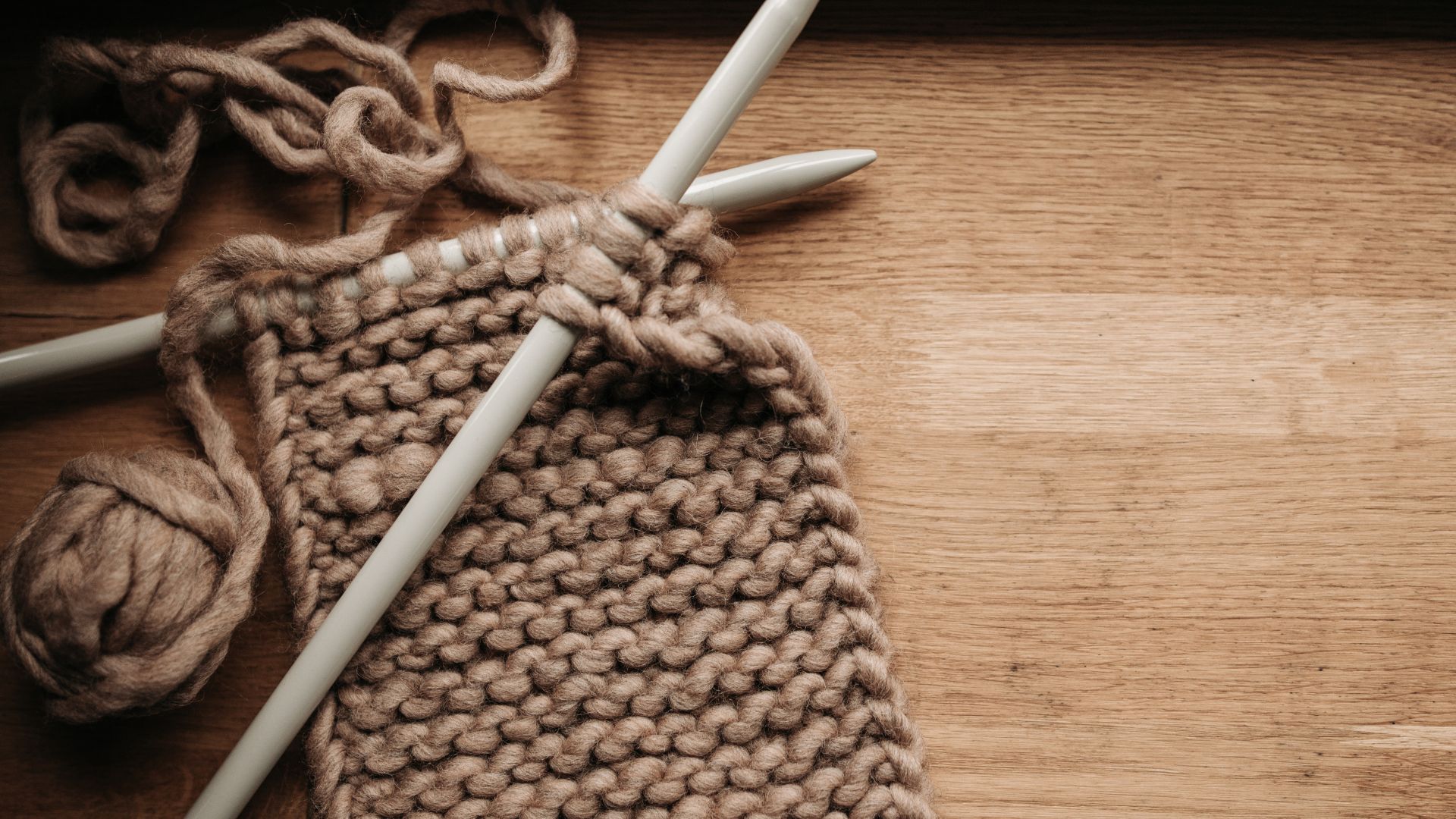Acrylic yarn is a popular choice among knitters and crocheters due to its affordability, durability, and wide range of colors. However, one common question that arises is whether it’s possible to block acrylic yarn.
What is Blocking?
Blocking is a technique used to shape and set the final dimensions of a knitted or crocheted piece. It involves wetting or steaming the finished project and then reshaping it to the desired measurements before allowing it to dry. This process smoothens stitches, evens out tensions, and enhances the overall appearance of the item.
Can You Block Acrylic Yarn?
The short answer is yes, you can block acrylic yarn, but it requires a slightly different approach compared to natural fibers like wool or cotton. Acrylic yarn is made from synthetic fibers, which don’t have the same response to blocking as natural fibers. However, you can still achieve some level of shaping and enhancement with acrylic yarn through a process called “steam blocking.”
Steam Blocking Acrylic Yarn
- Prepare Your Project: First, ensure your project is clean and ready for blocking. Gently hand wash it in mild detergent if necessary, and then lay it flat on a clean towel.
- Steam Treatment: Using a steam iron or a handheld steamer, hover over the project without touching it directly, allowing the steam to penetrate the fibers. Keep the iron or steamer a few inches away to avoid damaging the yarn. Move it back and forth across the piece for a few seconds.
- Reshape and Pin (Optional): While the project is still warm from the steam, gently reshape it to the desired measurements. If needed, you can use rustproof T-pins to secure it in place on a blocking board or a padded surface.
- Let it Cool and Dry: Allow the project to cool and dry completely in the new shape before unpinning. This sets the yarn fibers in the new form.

Why Steam Blocking?
Acrylic yarn doesn’t have natural memory like wool, so it won’t hold blocking as effectively. However, steam blocking can relax the fibers temporarily, allowing you to reshape the item. Keep in mind that the results may not be as long-lasting as with natural fibers.
So,…
while blocking acrylic yarn is possible through steam treatment, the results might not be as permanent as with natural fibers. It’s always a good idea to test a small swatch first to see how the yarn reacts to steam blocking before applying it to your entire project.
External Resources for Further Reading:
Moving forward
Experimenting with blocking techniques can help you achieve better results with your acrylic yarn projects. Remember to handle your creations with care and enjoy the creative process.
Tips for Effective Acrylic Yarn Blocking
Now that you understand the basics of steam blocking acrylic yarn, here are some additional tips to ensure the best results for your projects:
1. Temperature Control
- Moderate Heat: Use a moderate steam setting on your iron or steamer. High heat can damage the acrylic yarn fibers, causing them to melt or lose their shape.
2. Test Swatches
- Always Test First: Before blocking your entire project, create a small swatch using the same yarn and stitch pattern. This allows you to test how the yarn reacts to steam blocking without risking the entire piece.
3. Patience is Key
- Allow Adequate Drying Time: Ensure your project is completely dry before unpinning it. Rushing this step can cause the shape to revert back or distort.
4. Shape and Pin (If Necessary)
- Pin Carefully: If you choose to pin your project to shape it, use rustproof T-pins and a padded surface like a blocking board. Avoid using regular sewing pins that can leave marks or damage the yarn.
5. Consider Alternatives
- Alternate Blocking Methods: While steam blocking is the most common for acrylic yarn, some crafters opt for spray blocking. With this method, you lightly mist the project with water instead of using steam.
6. Handle with Care
- Handle Delicately: Even though acrylic yarn is durable, excessive stretching or pulling during blocking can distort the stitches. Handle the project gently to maintain the stitch integrity.
7. Storage and Maintenance
- Store Appropriately: Once your project is blocked and dried, store it flat or folded neatly to maintain its shape. Avoid hanging or folding it in a way that might cause stretching or distortion.
Conclusion
Blocking acrylic yarn can enhance the appearance of your projects, providing a polished and professional look. While acrylic doesn’t hold its shape as well as natural fibers, steam blocking allows for some manipulation to achieve desired dimensions and stitch definition.
Experiment with different blocking methods and take the time to understand how your particular acrylic yarn responds to treatments. With patience and practice, you can master the art of blocking acrylic yarn and elevate your creations to new levels!
Remember to refer to the provided external resources for more in-depth guidance and explore various techniques to find what works best for your specific projects. Happy crafting!
Comparison tabular
| Aspect | Natural Fibers (Wool/Cotton) | Acrylic Yarn |
|---|---|---|
| Blocking Technique | Wet blocking or steam blocking | Steam blocking |
| Fiber Response | Absorbs moisture, holds shape well | Synthetic, doesn’t retain shape as effectively |
| Heat Sensitivity | Can withstand moderate heat | Can melt or deform with high heat |
| Memory | Has natural memory, holds blocking well | Lacks natural memory, less permanent blocking |
| Drying Time | Longer drying time | Quicker drying time |
| Care Required | More delicate handling during blocking | Requires gentle handling, avoid excessive stretching |
| Reshapeability | Easily reshaped and retains shape well | Can be reshaped temporarily, less long-lasting |
| Test Swatch Importance | Essential for gauging blocking effects | Highly recommended before full blocking |
| Storage Recommendations | Store flat or folded carefully | Store flat to maintain shape |
This table highlights the fundamental differences in the blocking process between natural fibers and acrylic yarn, emphasizing the varying responses to blocking techniques and the overall care required for each type of fiber.
Wrapping Up
Blocking, whether with natural fibers like wool or cotton or with synthetic acrylic yarn, is a finishing touch that can elevate your crafting projects. While natural fibers tend to hold their shape better and respond more favorably to blocking, acrylic yarn offers possibilities through steam blocking, albeit with less permanence.
Understanding the unique characteristics of each type of yarn and the appropriate blocking techniques is key to achieving the desired results. Experiment, test swatches, and handle your projects with care to ensure the best outcomes.
Remember, blocking is a creative process that allows you to refine your creations, enhance stitch definition, and achieve the perfect fit or shape. Embrace the opportunity to experiment and enjoy the journey of crafting beautiful pieces with the yarn of your choice!
If you’re curious to dive deeper into the specifics of blocking or want more insights, the provided external resources offer valuable information to expand your knowledge and skills. Happy crafting and happy blocking.

For over a decade, I’ve been Mike, an artist, crafter, and designer deeply immersed in the Croc world. I thrive on crafting unique, size-inclusive patterns, fostering creativity, and sharing them on ktforum.com. My designs aim to ignite your creative spark and delight you, ensuring clarity and ease of use through rigorous testing. Join me in expressing your creative flair and showcasing your craft with joy.
Related Posts
- To Block or Not to Block: Unveiling the Magic of Crochet Projects
Crocheting is a wonderful craft that lets you create beautiful and intricate designs with just…
- Understanding How Blocking Reduces the Curling Effect in Knitting
Knitting is a beautiful craft that rewards patience and skill. Yet, the final piece doesn't…
- Understanding Yarn Types and Their Influence on Curling in Knitting Projects
Knitting is a delightful craft that allows for creativity and expression, but at times, dealing…
- Understanding Blocking in Crochet: Enhancing Your Handcrafted Creations
Crocheting, a beautiful craft that weaves threads into intricate designs, often involves a finishing touch…

